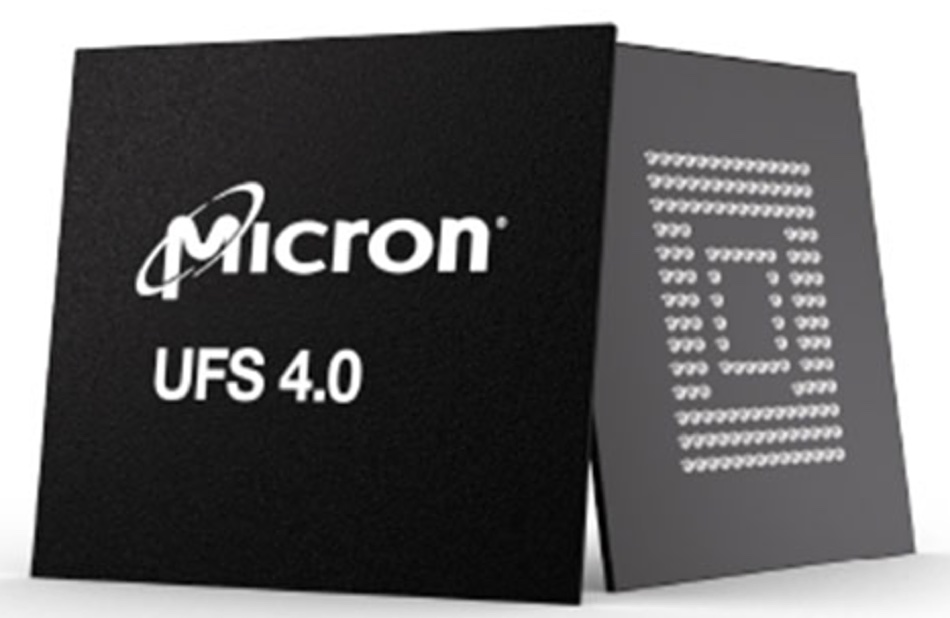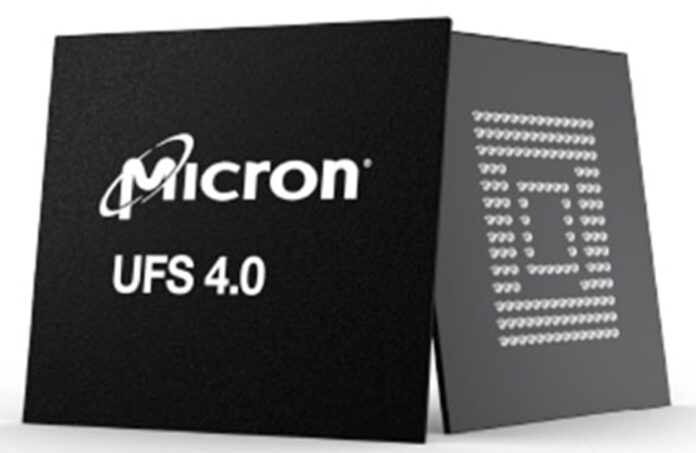Using 232-layer NAND and the JEDEC UFS v4.0 standard, Micron has doubled its smartphone card speed compared to previous 176-layer product.
Update: Micron UFS card specificity for smartphone memory added, 23 June 2023. Mouser 1TB and 2TB Micron UFS 3.1 flash card capacity mistake removed, 24 June 2023.
SCSI-based UFS (Universal Flash Storage) flash cards are about the size of a fingernail. They can be used for embedded storage in smartphones and also for external storage on digital cameras and the like for data transfer and storage. The JEDEC UFS standard refers to both embedded memory storage and removable memory cards. Micron’s UFS 4.0 card is specifically for embedded memory storage in smartphones.
Mark Montierth, corporate VP and Micron’s Mobile Business Unit GM, said: “Micron’s latest mobile solution tightly weaves together our best-in-class UFS 4.0 technology, proprietary low-power controller, 232-layer NAND and highly configurable firmware architecture to deliver unmatched performance.”

Micron produced a 176-layer UFS card two years ago and its capacity range was 128, 256 and 512GB. (A Mouser reference to 1TB and 2TB Micron UFS 3.1 flash cards is wrong.) The latest card has a range of 256 and 512GB and 1TB, through using higher density NAND.
It’s formatted as TLC (3bits/cell) with six planes to help parallelize access – four planes in 256GB model – and delivers up to 4,300MBps sequential read bandwidth, using Micron’s own controller. The prior product provided up to 1,890MBps so the speed increase is more than double.
But it’s puzzling that the older product could, at least according to Micron, download a two-hour 4K movie in 9.6 seconds, while the new one “allows users to quickly download two hours of 4K streaming content in less than 15 seconds, twice as fast as the prior generation.” We have asked Micron the obvious question – why is the new product, supposedly twice as fast, apparently five seconds slower?
The answer from Micron refers to increased download file sizes: “The download time for a two-hour 4K movie in 9.6 seconds provided in the UFS 3.1 release was based on a 14 GB file size. For our UFS 4.0 example in question, we based it on a 50 GB file size, which would be more standard for today’s flagship smartphones based on an average 7 MBps generated, equaling 50 GB for two hours. Based on the UFS 4.0 sequential write speed which is 4000 MBps (more than twice as fast than UFS 3.1’s 1500 MBps write speed), the download of the 50 GB file of 4K video would take ~13 seconds, and about 33 seconds for UFS 3.1, which is more than 2.5x faster.” That’s clear enough.
The new product’s sequential write speed is up to 4,000MBps and it is said to be 25 percent more power-efficient than the previous product.
Micron is shipping samples of its UFS 4.0 storage solution to worldwide mobile manufacturers and chipset vendors. Volume production will begin later this year ready for the next wave of 5G and AI-enabled smartphones, Micron says.








